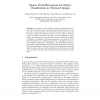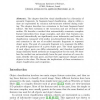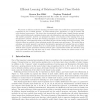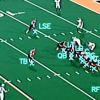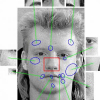120
Voted
DAGM
2006
Springer
15 years 4 months ago
2006
Springer
Abstract. We present a novel model for object recognition and detection that follows the widely adopted assumption that objects in images can be represented as a set of loosely cou...
105
Voted
CLOR
2006
15 years 4 months ago
2006
The chapter describes visual classification by a hierarchy of semantic fragments. In fragment-based classification, objects within a class are represented by common sub-structures ...
CP
1998
Springer
15 years 5 months ago
1998
Springer
In this paper we will show how constraint solving methods can be applied for the recognition of buildings in aerial images. Object models are transformed to constraint representati...
101
click to vote
ICMCS
2005
IEEE
15 years 6 months ago
2005
IEEE
Along with image and video libraries, archives of 3D models have recently gained increasing attention. Accordingly, there is an increasing demand for solutions enabling retrieval ...
112
Voted
ICCV
2005
IEEE
16 years 2 months ago
2005
IEEE
We present an efficient method for learning part-based object class models from unsegmented images represented as sets of salient features. A model includes parts' appearance...
ICCV
2007
IEEE
16 years 2 months ago
2007
IEEE
For many multi-part object classes, the set of parts can vary not only in location but also in type. For example, player formations in American football involve various subsets of...
104
Voted
CVPR
2007
IEEE
16 years 3 months ago
2007
IEEE
We describe an unsupervised method to segment objects detected in images using a novel variant of an interest point template, which is very efficient to train and evaluate. Once a...
114
Voted
CVPR
2006
IEEE
16 years 3 months ago
2006
IEEE
We address the problem of detecting complex articulated objects and their pose in 3D range scan data. This task is very difficult when the orientation of the object is unknown, an...
122
Voted
CVPR
2005
IEEE
16 years 3 months ago
2005
IEEE
We describe a novel technique for identifying semantically equivalent parts in images belonging to the same object class, (e.g. eyes, license plates, aircraft wings etc.). The vis...
